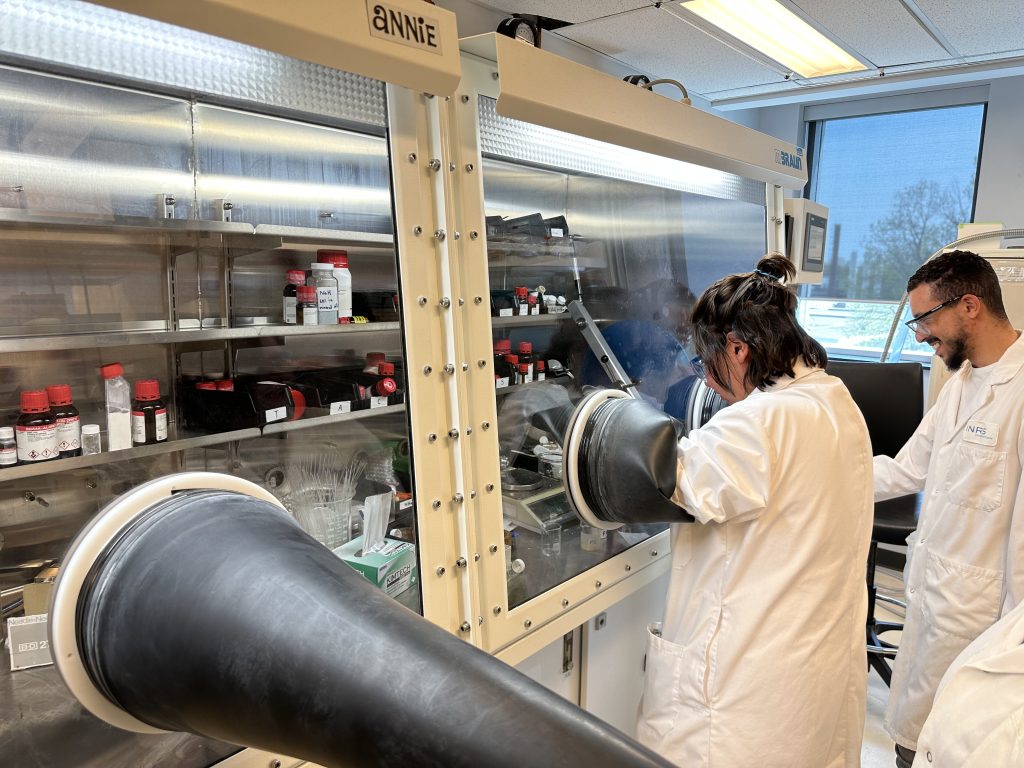Organometallic Chemistry Laboratory for the Design of Catalysts and Therapeutics
Function of the infrastructure
Led by professor Annie Castonguay, the Organometallic Chemistry Laboratory for the Design of Catalysts and Therapeutics unites the chemists of the INRS and offers them an optimal experimental environment for the synthesis and the purification of experimental molecules, whether it be in anhydrous conditions or in open air.
As its name indicates, organometallic chemistry is a the study of organic molecules with a covalent bond from one of its carbon and a metal. One of the first discovered molecules of this type is Zeise’s salt, synthesized in 1830 by William Christopher Zeise: three atoms of structural chlorine are bonded to a platinum atom, which is in turn joined to the double bond of ethylene. While Zeise correctly identified ethylene, the mystery surrounding the structure of Zeise’s salt created a large interest in organometallic chemistry, contributing to the the rapid development and discoveries in the field during the 19th and 20th century. Nowadays, organometallic chemistry has multiple applications, including their frequent use as catalysts, molecules which are added to reagents in order to reduce the necessary energy to activate a chemical reaction, allowing to accelerate the reaction or to produce it in simplified conditions. As an example, organometallic catalysts can be used to facilitate hydrogenation reactions, polymerization or hydrocarobonylation.
While it may not be the case for all, some organometallic molecules are biologically active, through their ability to interact and effect living organisms, having dose-dependant adverse or beneficial effects. One of the better known examples would be Vitamin B12, which contains multiple aklyl-cobalt bonds. There are also multiple synthetic organometallic molecules which are used in medicine, such as thiomersal, which is frequently used in injectable solutions as a preservative thanks to its antifungal and antiseptic properties.
Nestled in the premises of building 70 of the Armand Frappier Health and Biotechnology centre, this laboratory features multiple sterile laminar flow hoods which contain a variety of equipments of research in order to facilitate the synthesis and the purification of new organometallic molecules, as well as the preparation of catalysts and reagents necessary for all stages of synthesis. The laboratory also features a glovebox which allows manipulation of products in anhydrous conditions, a particularity that is very important when working with molecules that can react with air and its humidity. As such, the glove box makes it possible for the users of the laboratory to have access to a medium filled with inert gas, nitrogen, and manipulate reagents directly without risking potential interactions with ambiant air.
A solvent station is also available, allowing a rapid creation of proper mediums for the synthesis of molecules, as well as multiple work enclosures.



